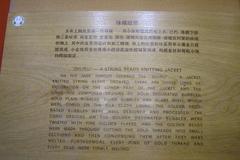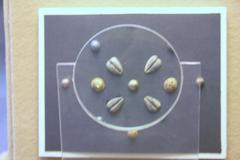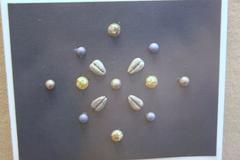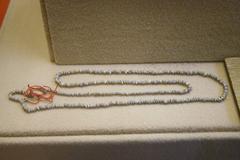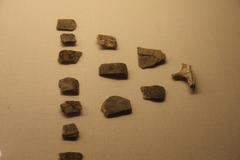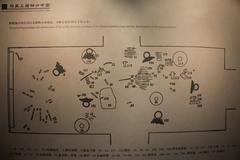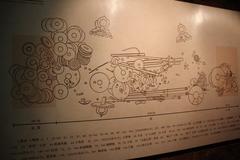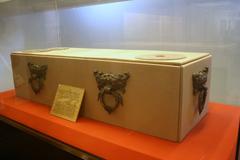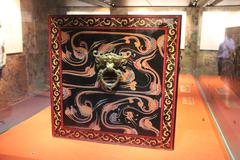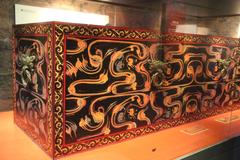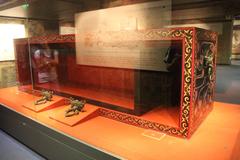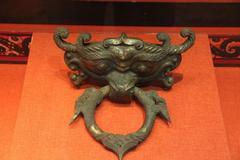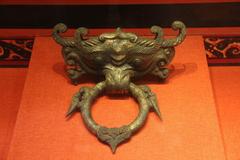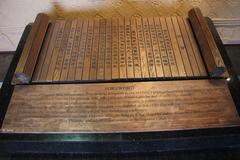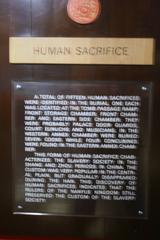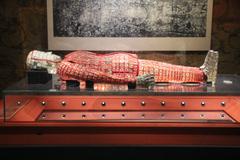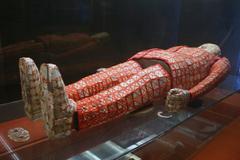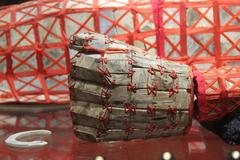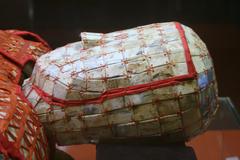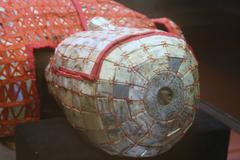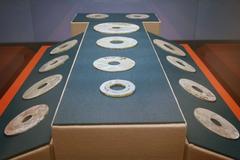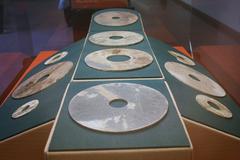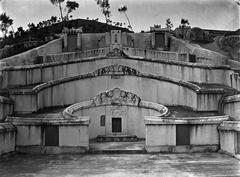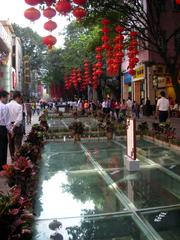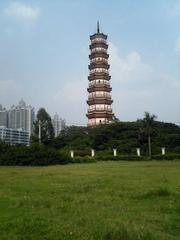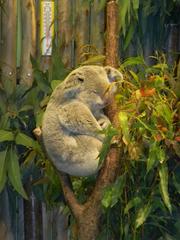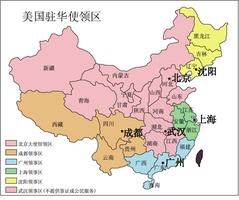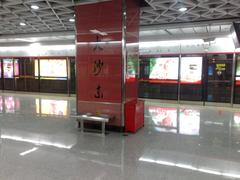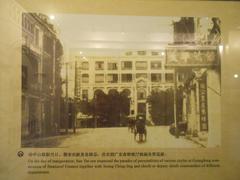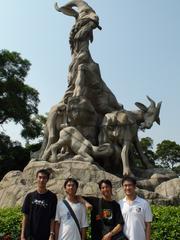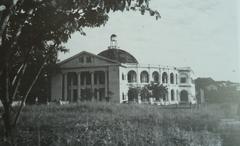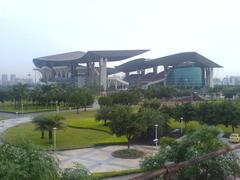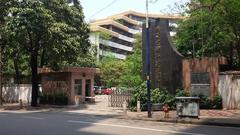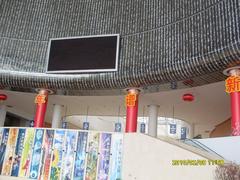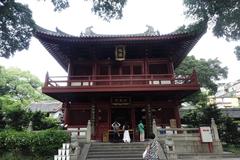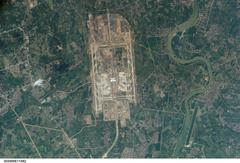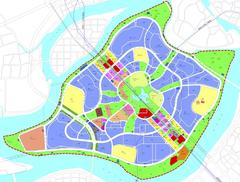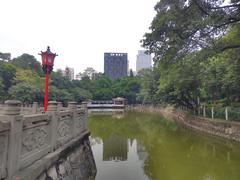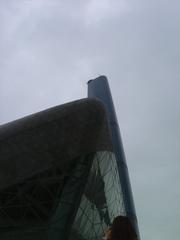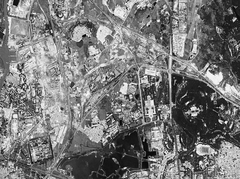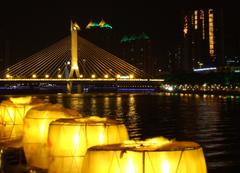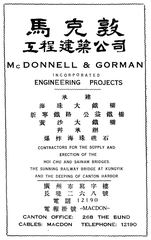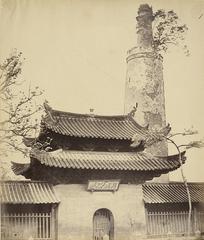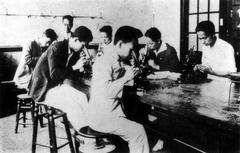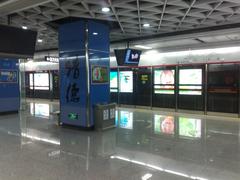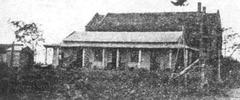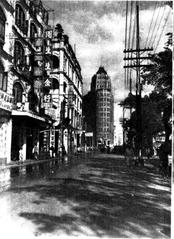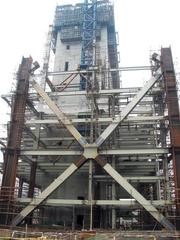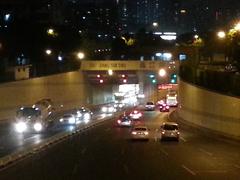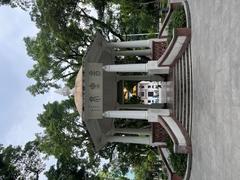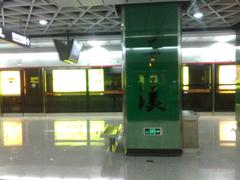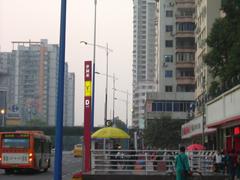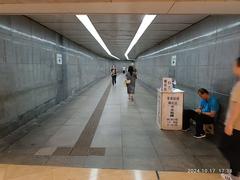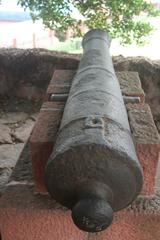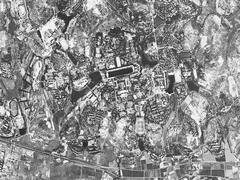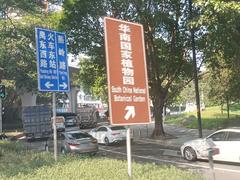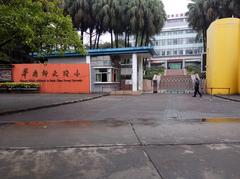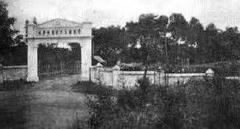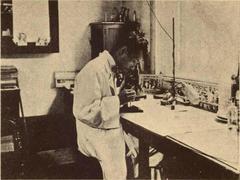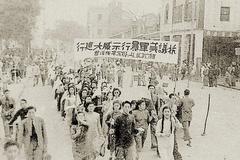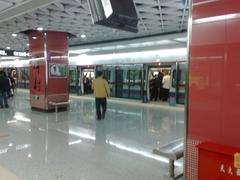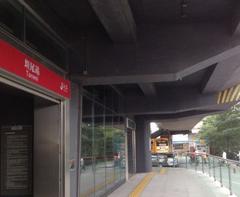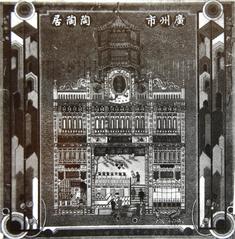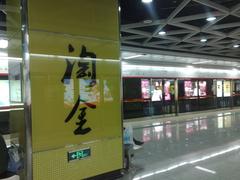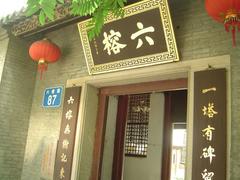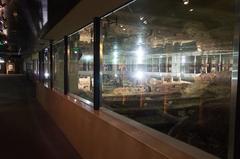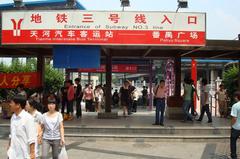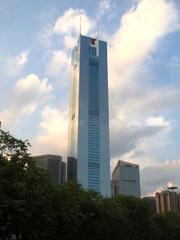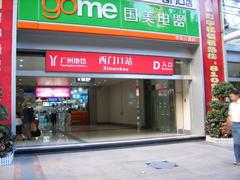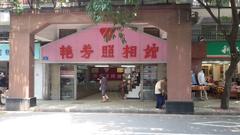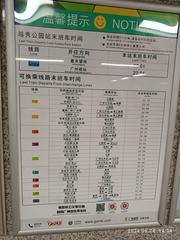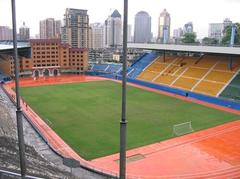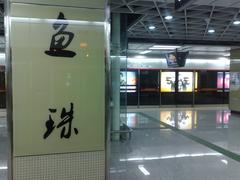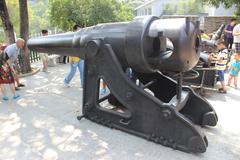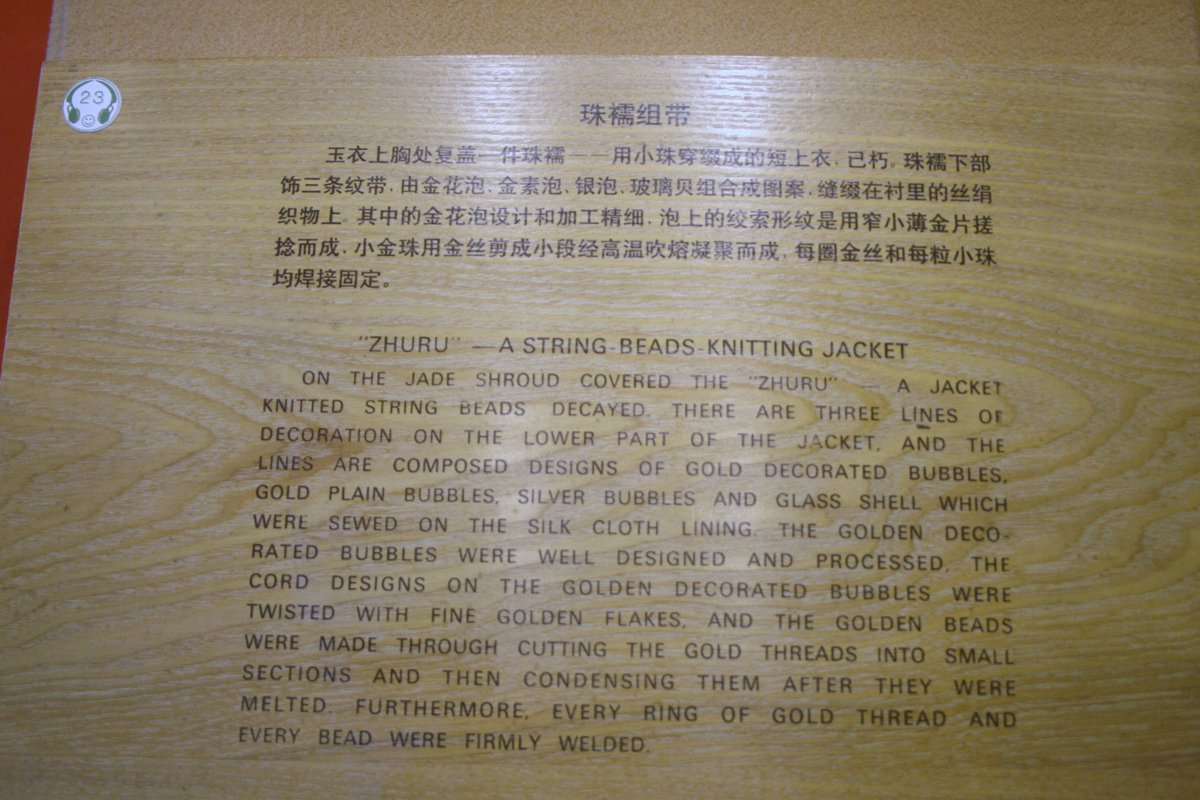
Tomb of Zhao Mo Visiting Hours, Tickets, and Comprehensive Guide to Guangzhou’s Historical Sites
Date: 15/06/2025
Introduction
The Tomb of Zhao Mo, located in downtown Guangzhou, stands as one of China’s most remarkable archaeological discoveries and a vital window into the rich history of the Nanyue Kingdom. Discovered in 1983, this ancient royal tomb provides an unparalleled look into early Han Dynasty burial customs, the cosmopolitan culture of southern China, and the international trade networks that thrived over two millennia ago. Today, the tomb and the Museum of the Mausoleum of the Nanyue King form a premier destination for history lovers and cultural explorers visiting Guangzhou.
This guide offers a detailed overview of the tomb’s origins, archaeological significance, and key artifacts, as well as practical information on visiting hours, ticketing, accessibility, travel tips, and nearby historical attractions. Whether you’re a first-time visitor, a student of Chinese history, or a seasoned traveler, this resource will help you make the most of your visit to one of Guangzhou’s most important historical sites.
For in-depth archaeological background and the latest visitor information, refer to authoritative sources such as CGTN, Newsgd.com, and Visit Our China.
Origins of the Nanyue Kingdom and Zhao Mo’s Reign
After the Qin Dynasty collapsed, the Nanyue Kingdom emerged (203 BCE–111 BCE) under the leadership of Zhao Tuo, with its capital at Panyu—now Guangzhou. The kingdom encompassed present-day Guangdong and Guangxi, and extended into northern Vietnam (newsgd.com). Zhao Mo, the second ruler, reigned from 137 BCE to 122 BCE, guiding Nanyue through a period of relative peace and prosperity. Under his rule, Nanyue maintained autonomy while fostering ties with the Han Dynasty, and the region became a center for cultural fusion and international commerce (CGTN).
Discovery and Structure of the Tomb
The tomb was unearthed during construction in 1983 at No. 867, Jiefang North Road, Yuexiu District. Remarkably undisturbed, it is the largest and best-preserved Han Dynasty painted stone chamber tomb in southern China (newsgd.com). The tomb lies about 20 meters underground and is made up of 750 massive stones. Its seven chambers include a main burial chamber, side rooms, and storage spaces. The walls are adorned with murals—some of the earliest known in southern China—depicting court life and ritual scenes.
The tomb’s discovery was a milestone for Chinese archaeology, providing a unique, intact context for studying the burial practices, social hierarchy, and material culture of the Nanyue Kingdom (Visit Our China).
Archaeological Significance and Key Artifacts
International Trade and Cultural Exchange
Excavations revealed over 1,000 artifacts, underscoring Nanyue’s status as an early hub of global trade and cultural exchange (CGTN). Notable finds include:
- Persian-styled silver box: This exquisite artifact reflects trade links with Persia (CGTN).
- African ivory and frankincense: Evidence of connections with Africa and the Red Sea.
- Gold imperial seal with dragon knob: The earliest of its kind, symbolizing royal authority (CGTN).
- Bronze mirrors, lacquerware, and date seeds: Items with artistic influences from Central Asia, Mesopotamia, and beyond (newsgd.com).
The Jade Burial Suit
A highlight is Zhao Mo’s jade burial suit, composed of over 2,000 jade tiles sewn with silk thread. Such suits symbolized purity, immortality, and elite status in Han funerary culture (Visit Our China).
Human Sacrifice and Funerary Customs
The tomb contained the remains of 15 individuals, believed to be servants and concubines buried with the king, reflecting the social hierarchy and beliefs in the afterlife during the Han era (Top China Travel).
Multicultural Artifacts
Artifacts from cultures as far afield as Central Asia, the Iranian plateau, and Southeast Asia—including musical instruments, chariots, and ritual vessels—underscore the cosmopolitan nature of the Nanyue court and Guangzhou’s significance on the ancient Maritime Silk Road (West China Tour).
Museum of the Mausoleum of the Nanyue King: Layout and Visitor Experience
Museum Complex and Exhibition Areas
The museum covers 17,400 square meters and features:
- King’s Tomb Exhibition Area: Directly above the tomb, allowing visitors to view the original underground chambers and key artifacts.
- Palace Exhibition Area: At 374 Beijing Road, showcasing palace ruins, daily life exhibits, and special collections (East China Trip).
Thematic Halls
- Treasures of Nanyue: Displays imported goods from Persia, Southeast Asia, and beyond.
- Funerary Rituals and Human Sacrifice: Explores burial customs and the role of sacrifice in Han society.
- Cultural Exchange: Features artifacts reflecting contact with Chu, Bashu, and Đông Sơn cultures.
Key Features
- Jade Burial Suit: Displayed in a climate-controlled case.
- Murals and Stonework: Among the best-preserved Han dynasty murals in southern China.
- Administrative Seal: Confirms Zhao Mo’s status as “Emperor Wen.”
- Ancient Wells: Over 500 wells at the palace site highlight ancient Guangzhou’s engineering (China Tripedia).
Special and Rotating Exhibitions
The museum hosts special exhibitions such as 3D holographic tours, interactive archaeological displays, and thematic showcases like the celebrated ceramic pillow collection (Guangzhou International).
Visiting Information: Hours, Tickets, and Accessibility
- Hours: Open Tuesday–Sunday, 9:00 AM–5:30 PM; closed Mondays (except public holidays). Last admission at 4:30 PM.
- Tickets: King’s Tomb Exhibition Area: CNY 12–50 (varies by exhibition; check official site for updates); Palace Exhibition Area: free (China Discovery).
- Location: 867 Jiefang North Road, Yuexiu District, Guangzhou.
- Transport: Metro Line 2, Yuexiu Park Station (Exit E), short walk to museum. Multiple bus routes also available.
- Accessibility: Main exhibition areas are wheelchair accessible; underground tomb chambers have limited accessibility due to stairs and narrow passages.
- Audio Guides: Available in multiple languages.
- Photography: Allowed in most areas (no flash); some galleries may restrict photography.
- Amenities: Rest areas, museum shop, on-site café, and modern restrooms.
Travel Tips and Nearby Attractions
- Recommended Visit Duration: 1–3 hours for the King’s Tomb; add 1 hour for the Palace Exhibition Area.
- Best Time to Visit: Weekday mornings to avoid crowds.
- Nearby Sites: Yuexiu Park, Sun Yat-sen Memorial Hall, Beijing Road Pedestrian Street, and the Chen Clan Ancestral Hall (East China Trip).
Frequently Asked Questions (FAQ)
Q: What are the visiting hours?
A: Tuesday–Sunday, 9:00 AM–5:30 PM; closed Mondays (except public holidays).
Q: How much are tickets?
A: King’s Tomb Exhibition Area: CNY 12–50; Palace Exhibition Area: free. Discounts for students, seniors, and children.
Q: Is the museum wheelchair accessible?
A: Yes, with some limitations in the underground tomb chambers.
Q: Are guided tours or audio guides available?
A: Yes, in multiple languages.
Q: How do I get there?
A: Take Metro Line 2 to Yuexiu Park Station (Exit E), then walk to the museum.
Q: Can I take photographs?
A: Yes, except in restricted areas and no flash allowed.
Visuals and Interactive Media
- High-quality images of the jade burial suit, murals, and artifacts are available on the museum’s official website.
- Virtual tours and interactive maps offer digital exploration of the tomb and exhibitions (Nanyue King Museum Official).
Conclusion & Call to Action
The Tomb of Zhao Mo and the Museum of the Mausoleum of the Nanyue King offer an extraordinary journey through ancient Chinese history and global cultural exchange. With its meticulously preserved tomb, world-class exhibitions, and accessible visitor facilities, the site is an essential destination for anyone interested in the civilization, artistry, and international ties of early southern China.
Plan your visit today:
- Book tickets in advance during holidays or peak seasons.
- Download the Audiala app for immersive audio tours and the latest visitor updates.
- Explore our related articles on Guangzhou’s top historical and cultural attractions.
Reliable Sources and Official Links for Further Reading
- Tomb of Zhao Mo Visiting Hours, Tickets, and Historical Guide to Guangzhou’s Ancient Nanyue Kingdom, 2025, Newsgd.com
- Visiting the Tomb of Zhao Mo in Guangzhou: History, Tickets, and Travel Tips, 2025, Visit Our China
- Discover the Nanyue King Mausoleum: Visiting Hours, Tickets, and Guangzhou Historical Sites Guide, 2025, East China Trip
- West China Tour
- Visiting the Tomb of Zhao Mo: Key Artifacts, Exhibitions, and Essential Visitor Information at a Premier Guangzhou Historical Site, 2025, Tour Beijing
- Nanyue King Museum
- CGTN Archaeology Reports, 2019–2025
- Nanyue King Museum Official Site, 2025
- China Discovery
- China Tripedia
- Guangzhou International
- Top China Travel
